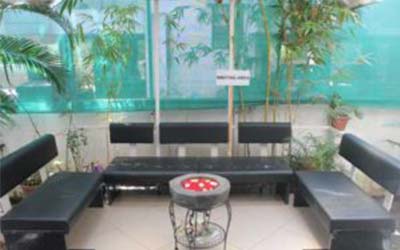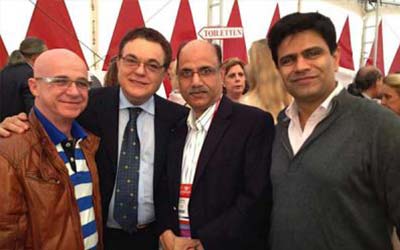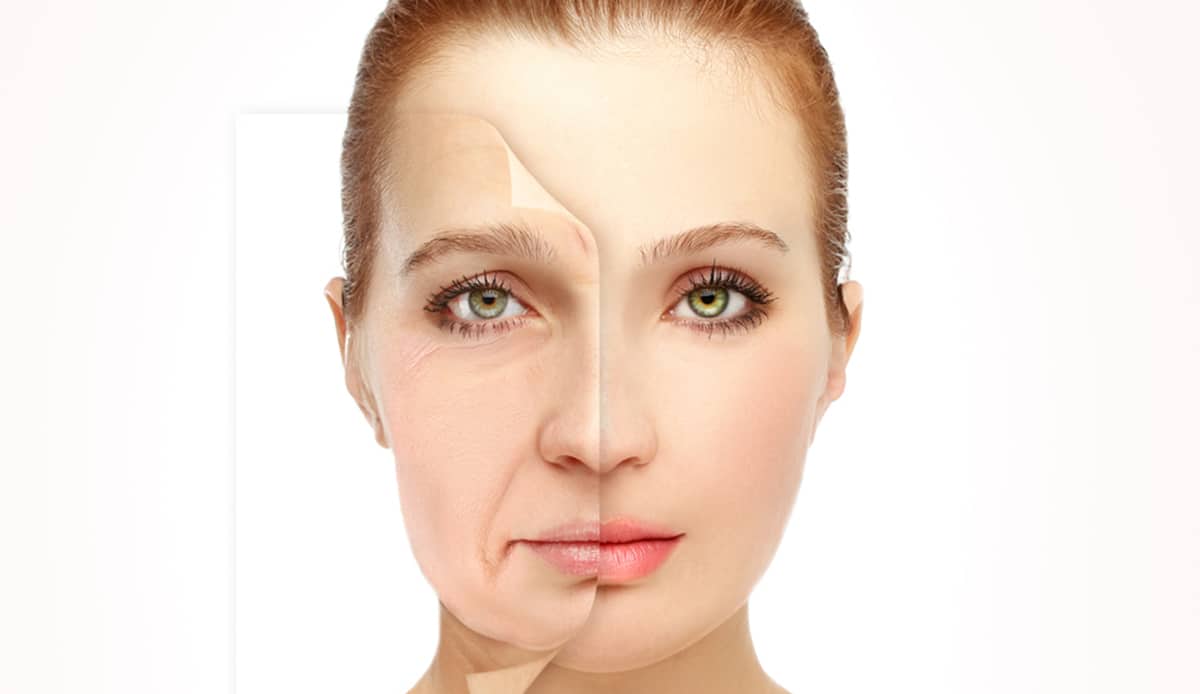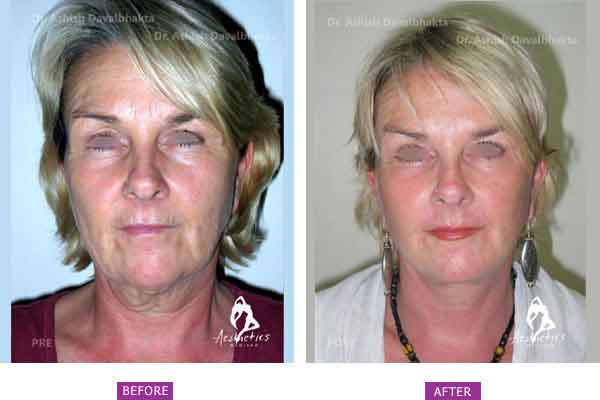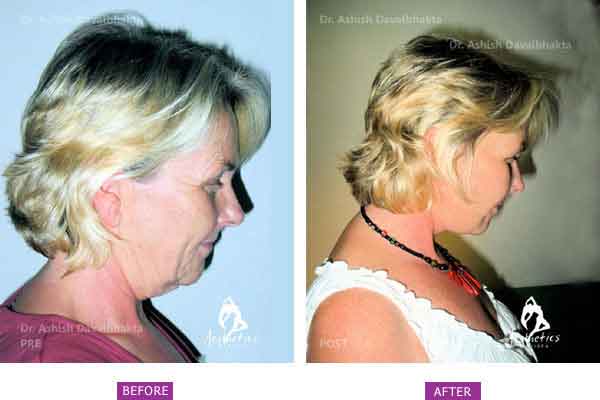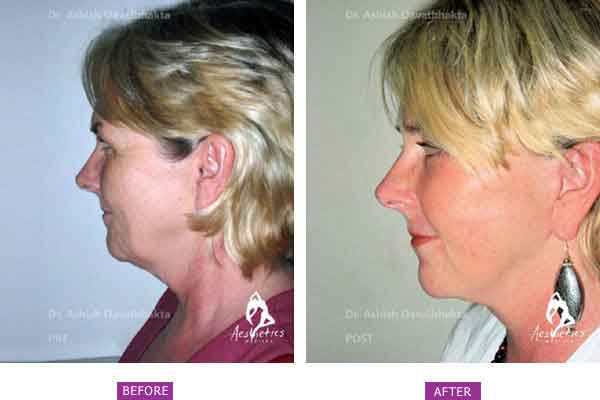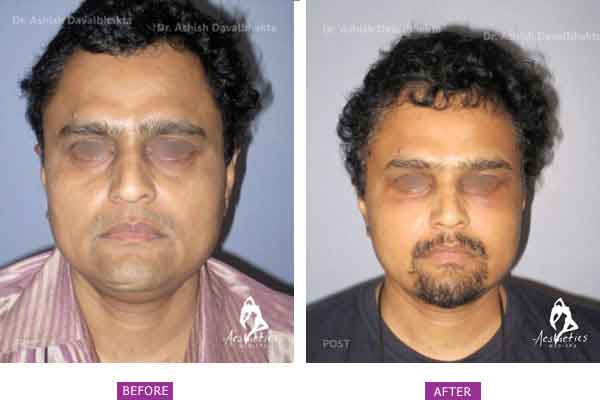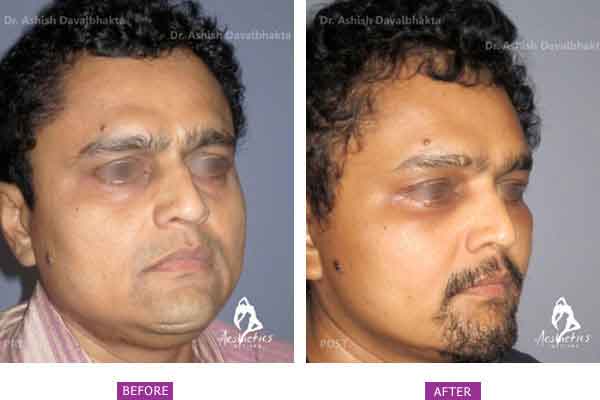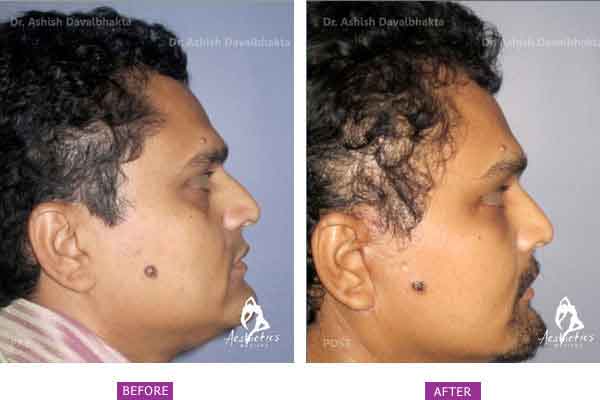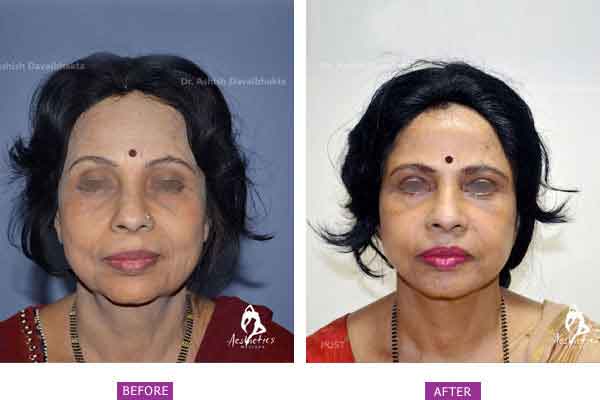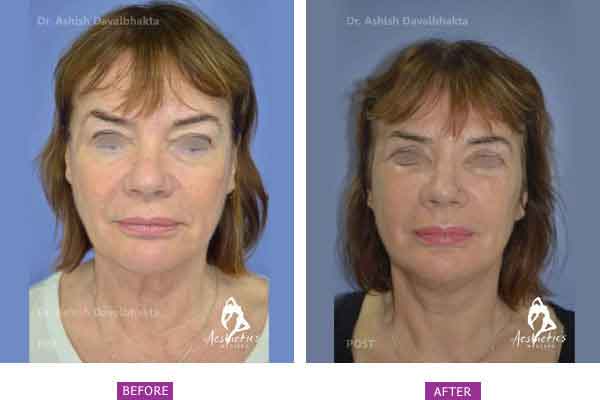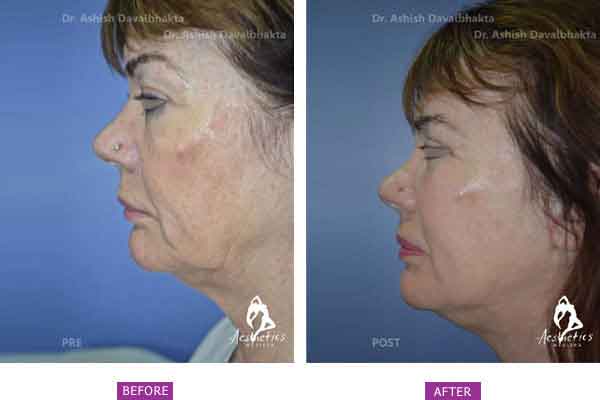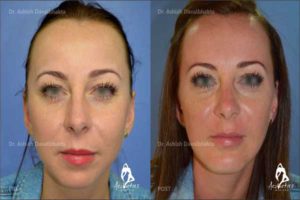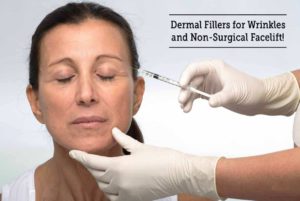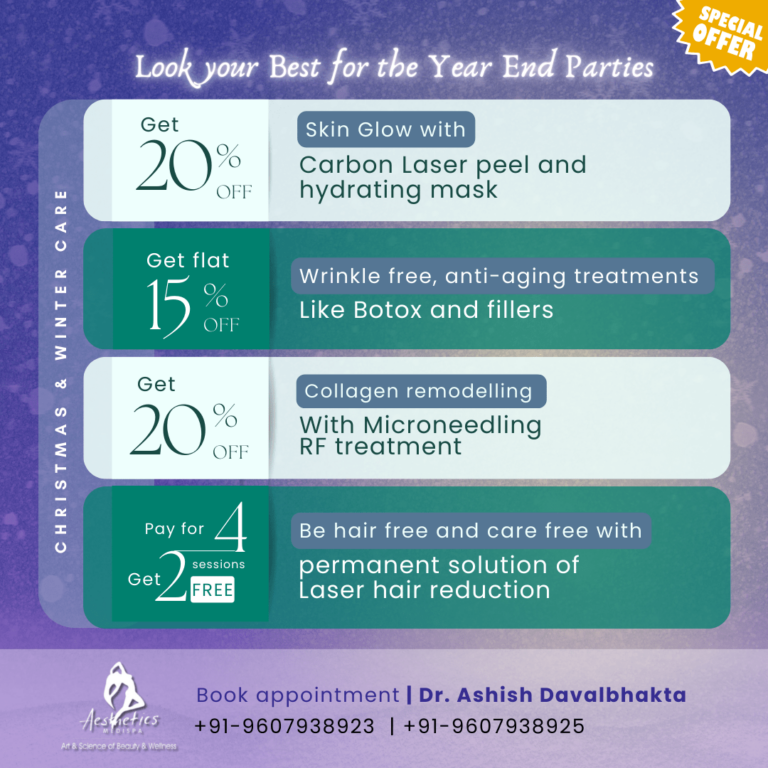In our facelift surgery practice at Aesthetics Medispa, we often encounter patients seeking affordable means of looking younger and reversing the signs of aging without the associated high costs. A common question we are asked is “What is the difference between a full facelift and a mini facelift surgery”? Can the facelift surgery before and after photos explain these differences?
In this guide, Dr. Ashish talks about the main differences between the two procedures so that you can evaluate the results for yourself. For any further queries, consult Dr. Ashish. He is UK trained Aesthetics Plastic surgeon, GMC registered, certified, accredited and affiliated with International, National and State recognized associations and boards.
What is a mini facelift and a full facelift?
A mid facelift rejuvenates the central section of the face from the lower eyelid to the upper lip. Due to the age, sun exposure, and gravity, there is a loss of volume of the tissues in the midface, hence, the sagging tissues are repositioned to enhance the lost volume.
A mini facelift is like a proper facelift, but we do not lift the SMAS flap, that is lifted in a proper facelift.
A full facelift improves sagging facial skin, jowls, and loose neck skin. It focuses on the areas of the lower face from ears to cheeks and down the jawline. Excess fat is removed and the muscles are tightened along with re-draping of the skin.
The exact technique that a facelift surgeon uses during a facelift depends on a number of factors, including a patient’s anatomy and personal goals, the extent of the facelift (mini vs. standard), and whether or not another procedure is being performed at the same time.
What are facelift surgery costs in India?
A mini facelift surgery in India typically costs around 1.2-1.5 lacs INR with GST. A full facelift surgery cost in India could be anywhere from 2.3-2.5 lacs INR depending on the complexity of the case. These charges include 3 days stay in the hospital, consultation, meals and/or nursing charges etc.
Results and effectiveness
Mini facelift surgery is recommended to people who have just started noticing signs of aging. These could be men and women in their late 30s or early-mid 40s. This procedure can take care of the loose folds of skin in the cheeks, jaw and around the neck.
Full facelift surgery is more permanent in that; it can completely eliminate wrinkles, under- the-neck folds and jowls as well as loose pockets of skin in the cheeks or beneath the eyes. This procedure is recommended to men and women in their late 50s and above. However, the major difference lies in the fact that a mini facelift cannot and will not target the forehead or the areas under and around the eyes.
For further queries related to full or, mini facelift procedures consult Dr. Ashish Davalbhakta. Dr. Ashish will discuss the options available to you, likely outcomes, any risks or potential complications, and recommend a course of treatment with the associated cost.
Facelift Before-after Results:
Major Dos and Don’ts before both procedures
The mini facelift has no major restrictions. As with any surgery, the invasive or full facelift surgery has several restrictions which include giving up smoking for at least 3-4 weeks prior to the surgery, not taking blood thinners and aspirin etc.
Procedural differences between Mini and full facelifts
Patients who have a mild degree of jowling and sagging skin are often good candidates for a mini-facelift. This is a less invasive technique. Deep facial tissues, which are typically located along the hairline above each ear and/or in the natural creases surrounding the ear are tightened through shorter incisions. Through these incisions, structural tissues around the cheeks are lifted and tightened to correct jowling, refine the jawline, and rejuvenate a “tired” appearance. A mini facelift is termed as a weekend facelift for a reason: it can be done under local anesthesia with sedation, as an outpatient.
A full facelift will more fully address moderate to advanced aging around the mid-face and neck. The facelift surgeon repositions the deeper tissues beneath the skin and removes excess skin to smooth creases, eliminate jowling and sagging skin under the chin, and restore a naturally youthful contour to the face and neck. A full facelift would naturally need general anesthesia with an overnight hospital stay. Mini facelifts are typically completed within 40-90 minutes depending on the skill of the facelift cosmetic surgeon. The full procedures take several hours depending on the extent of aging and the lift required.
Risk factors, recovery time and return to work
In case of a mini lift, patients can return to work within a few days provided there is no swelling or bruising after the sutures are removed. In case of a full facelift surgery, we recommend resuming social activities only 2 weeks following the procedure. The risk factors of both procedures are more or less the same: there may be bleeding, scarring, clotting, swelling, and some pain at the site of the sutures. In the case of full facelift surgery, there may be a potential risk of damage to the facial nerve or skin infections at the site. These risks are doubled in the case of diabetics and smokers.
Choosing a Facelift surgeon in India
Facelift surgery is a complex procedure that requires extensive knowledge in facial anatomy, a very specific skill set of surgical techniques, and a highly-developed eye for aesthetic detail.
It is also important to make sure the surgeon is fully trained in the procedure you’re looking to do, is accredited or certified, follows high standards of safety, cleanliness, has good reviews, understands your surgical goals, and is able to explain options available to you with potential risks and complications.
Men considering facelift surgery should make sure a cosmetic surgeon has experience in performing facelifts for male patients; the anatomy of the male face is unique from a woman’s and requires a knowledgeable approach.
When you choose an ISAPS member surgeon, you can be confident that your surgeon:
- Is qualified and experienced
- Has a record of safety
- Has demonstrated a commitment to ethical practice
- Is trained in the safest, most up-to-date techniques and treatments.
Dr. Ashish is an active ISAPS member. He is also Certified, Accredited and Affiliated with International, National and State recognized associations and boards, such as International Society of Aesthetic Plastic Surgery (ISAPS), Indian Association of Aesthetic Surgeons (IAAPS), Association of Plastic Surgeons of India (APSI), Maharashtra Medical Council.
This article was first posted on August 17, 2015 and last updated on November 23, 2018.

